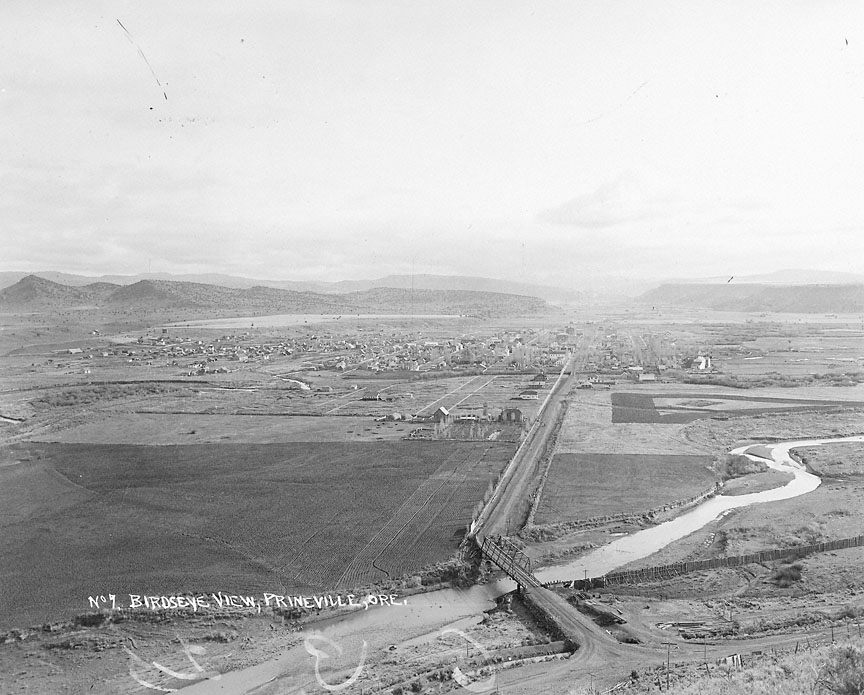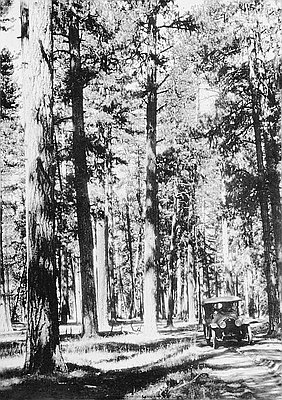- Catalog No. —
- OrHi 17662
- Date —
- c. 1915
- Era —
- 1881-1920 (Industrialization and Progressive Reform)
- Themes —
- Geography and Places
- Credits —
- Oregon Historical Society
- Regions —
- Central
- Author —
- Charles Wesley Andrews
Bird’s-eye View of Prineville, c. 1915
This bird’s-eye view of Prineville, Oregon was taken by Charles Wesley Andrews (1875–1950) around 1915. The photograph looks east down Main Street. Ochoco Creek is visible passing through the town in the center-left of the image as it nears the Crooked River—flowing from right to left—in the foreground. Andrews, a photographer from Baker, Oregon, specialized in the making of photo post cards of the Pacific Northwest. While this image was reproduced from the negative, it may have originally been produced and sold as a post card.
Prineville was founded by Barney Prine in 1868. The town was originally called Prine, but in 1872, its name was officially changed to Prineville. Although Prine operated a blacksmith shop, saloon, and store in the fledgling town, the development of the community is generally credited to the efforts of Monroe Hodges, who arrived there in 1871 and constructed the town’s first hotel. Hodges had the townsite surveyed and platted by 1877, allowing for the organized sale of property to newcomers. In 1880, Prineville was incorporated, and to this day remains Crook County’s sole incorporated community.
In 1900, Prineville benefited from the extension of the Columbia Southern Railway’s service to Shaniko sixty miles north of Prineville. Not only did the nearby rail provide ranchers, farmers, and merchants with market access, but it allowed for the transportation of parts to construct a small power plant which subsequently electrified the town’s business center. For a time, the town’s residents held out hope that a major rail company would invest in a railway that passed directly through Prineville, but those hopes were dashed by 1911 when the Oregon Trunk Railway was constructed along the Deschutes River without providing a service line to Prineville. In an attempt to rectify the problem, in 1916, voters authorized the sale of $322,000 worth of municipal bonds to connect Prineville with the Oregon Trunk. The line was built, but was a financial disaster for the community, eventually deteriorating before ever paying for itself.
The town failed to attract any large manufacturers until the 1930s, when lumber companies began to take an interest in the timber from the nearby Ochoco forest. In order to get their lumber to market, the mills provided loans to the town for the refurbishment of the rails. During World War II, robust prices paid for wood products infused Prineville’s economy with much needed cash and transformed the “ranching town” into an industrial community firmly linked to the ups and downs of timber markets.
Further Reading:
Vaughan, Thomas, ed. High and Mighty: Select Sketches about the Deschutes Country. Portland, Oreg., 1981.
Crook County Historical Society. The History of Crook County, Oregon. Prineville, Oreg., 1981.
Written by Joshua Binus, © Oregon Historical Society, 2005.

